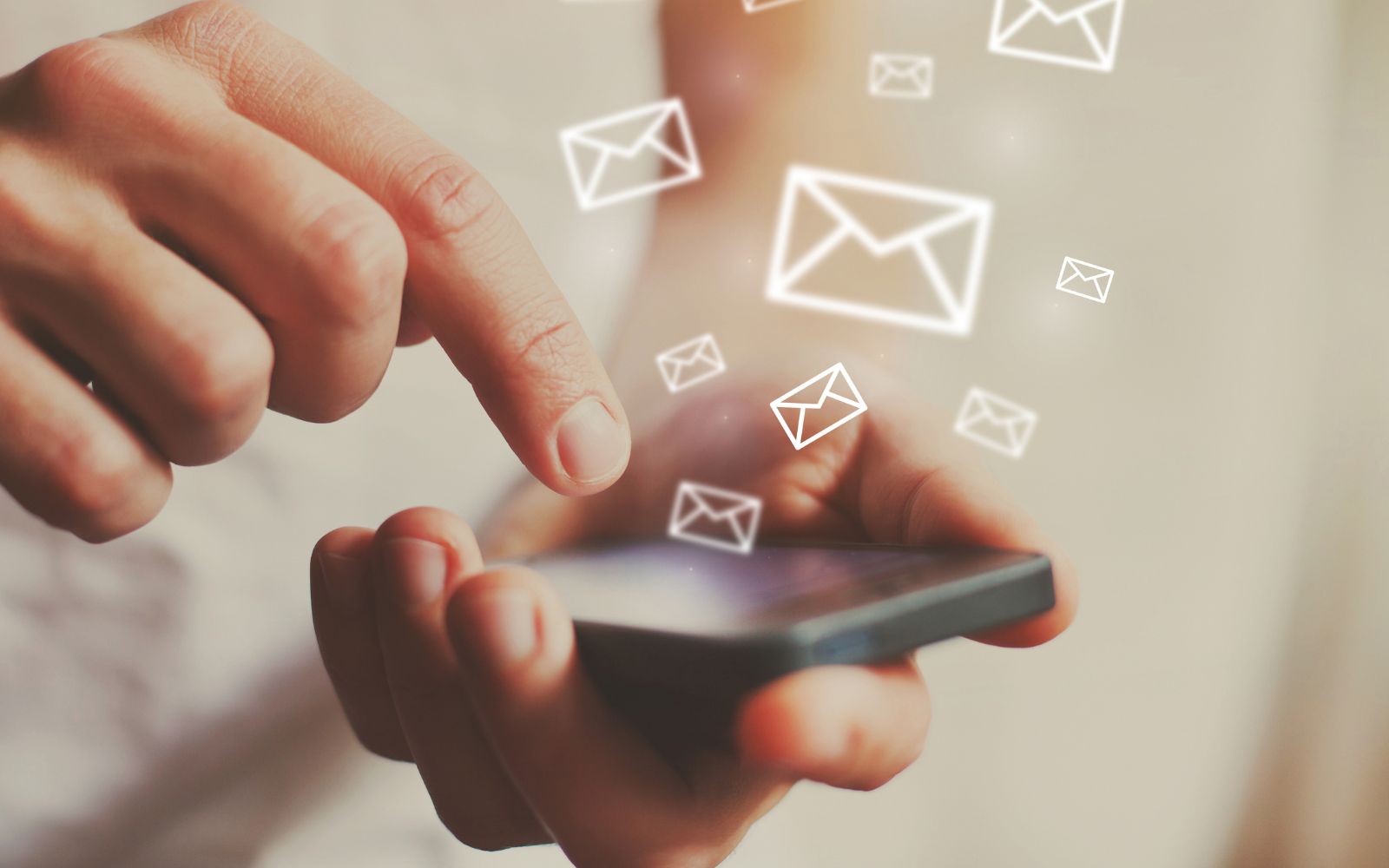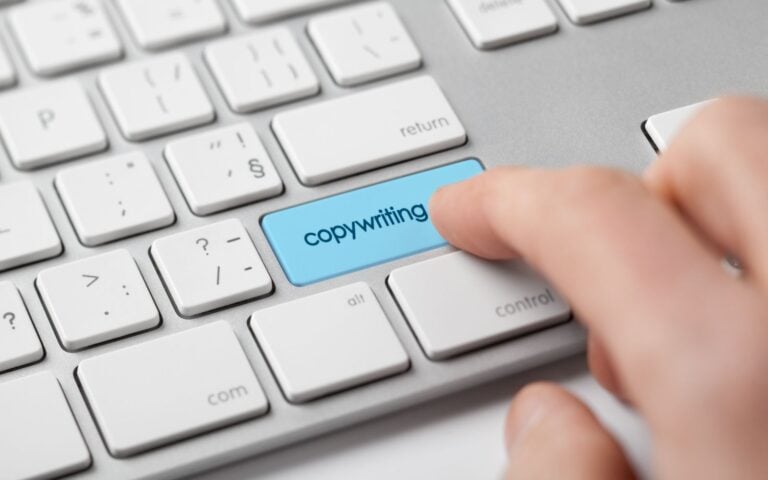Email Marketing Tips for Beginners: A Complete Guide
Are you a beginner when it comes to email marketing? Learn everything there is to know with this comprehensive guide full of friendly tips and tricks!

Email marketing is a powerful tool that can help your business grow by nurturing relationships with potential customers and increasing brand awareness.
As a beginner, diving into email marketing might seem overwhelming, but with the right tips and strategies, you’ll be on your way to running successful campaigns in no time.
One of the key elements to successful email marketing is building and maintaining a healthy email list. This means avoiding spam triggers and focusing on quality subscribers who genuinely show interest in your products or services.
Make sure your emails stand out amidst the competition by crafting engaging, personalized content that resonates with your audience.
Another essential aspect is analyzing your campaigns’ performance with tools like GetResponse Analytics, which allows you to track conversions and measure the return on investment (ROI).
Setting goals for individual email campaigns and continuously refining your strategies based on performance data will significantly improve your email marketing effectiveness over time.
Understanding Email Marketing
Email Marketing Basics
Email marketing is a form of direct marketing that uses emails to build relationships and sell products or services to your audience.
As a beginner, it’s crucial to grasp the fundamentals of email marketing to reach your target audience and convert leads effectively.
Here are some key points to understand:
- Build a healthy email list by collecting subscribers through your website, events, or in-store sign-ups.
- Segment your list based on subscribers’ interests, demographics, or behavior to send tailored content
- Develop engaging email content, including subject lines and body copy, to spark interest and drive conversions
- Optimize your emails for mobile devices, as more people check their emails on smartphones and tablets
Benefits of Email Marketing
Email marketing offers numerous benefits for businesses, and it’s important to recognize these advantages as you begin your journey into email marketing:
- Cost-effective: Email marketing is a budget-friendly option, allowing you to send targeted messages at a low cost per recipient
- Highly targeted: You can segment your list and send personalized content to your subscribers, increasing your chances of conversions
- Better engagement: With appealing design and content, you can strengthen the bond with your audience, leading to trust and loyalty
- Measurable: Email marketing software provides analytics, so you can track opens, clicks, and conversions to improve your campaigns
Goals and Objectives
Before you start crafting your email campaigns, it’s essential to set clear goals and objectives for your email marketing efforts. This will guide your strategy and help you measure success. Common email marketing goals include:
- Increasing brand awareness: use email marketing to introduce your business and make a lasting impression on subscribers
- Building customer relationships: consistently send valuable content to your audience and establish a connection, leading to long-term loyalty
- Driving sales: leverage promotional emails and targeted content to encourage subscribers to make a purchase
- Improving customer retention: use personalized communication and exclusive offers to keep existing customers engaged and motivated to continue doing business with you
By understanding these email marketing basics, benefits, and objectives, you’ll be well-prepared to launch effective email campaigns that drive results for your business.
Building an Email List
Target Audience
Understanding your target audience is crucial for building a successful email list. First, define your buyer persona, which includes the demographic information, values, and goals of your ideal customers.
With this information, you can create specific segments within your overall target audience, allowing you to:
- Personalize your content to be more engaging and relevant
- Send targeted promotional offers tailored to different groups
- Improve your overall email marketing strategy
Lead Magnets
To grow your email list, you need to provide incentives for people to sign up. These incentives, known as lead magnets, should be valuable and relevant to your audience. Some popular types of lead magnets include:
- Ebooks: Offer a free digital book with useful and informative content.
- Webinars: Invite subscribers to attend a live online event about an industry-related topic.
- Exclusive discounts: Provide special offers and deals for email subscribers.
- Free samples or trials: Allow potential customers to try out your product or service without any commitment.
Related: Looking for creative ways to build your email list? Here are 12 opt-in freebie ideas that can help you quickly grow your audience and increase engagement!
To effectively use lead magnets, make sure to:
- Align them with your target audience’s interests and needs
- Promote your lead magnets through social media, ads, or blog posts
- Track their success and adjust them as needed to improve conversion rates
Remember to always avoid spam triggers and adhere to best practices for high-quality email campaigns, which will help you maintain a positive reputation and ensure your messages reach your audience’s inbox rather than their spam folder.
By combining a clear understanding of your target audience with enticing lead magnets, you can efficiently grow and segment your email list, strengthening both your relationship with your customers and the overall success of your email marketing efforts.
Creating Compelling Content
Subject Lines
Crafting attention-grabbing subject lines is crucial to getting your subscribers to open your emails. Keep your subject lines concise and to-the-point. Experiment with different styles, such as:
- Asking questions
- Creating urgency
- Use of emojis
- Personalization with the subscriber’s name
Make sure to A/B test your subject lines to see which ones perform best.
Email Design
An effective email design can make a significant impact on your engagement rates. Follow these tips for a visually appealing email:
- Use an easy-to-read font
- Break up text into shorter paragraphs
- Include relevant images and graphics
- Use bullet points or numbered lists where appropriate
- Make sure your email is mobile-friendly
Consider using a drag-n-drop email builder or pre-made templates to create a visually appealing design.
Personalization
Personalized emails can significantly improve your open and click-through rates. Tailor your content to your subscriber’s interests and needs by doing the following:
- Use the subscriber’s name in your subject line and email body
- Segment your email list based on preferences, demographics, or behavior
- Share content and offers relevant to each segment of your list
By focusing on these aspects when creating compelling content in your email marketing campaigns, you’ll be better equipped to engage your subscribers and drive conversions.
Email Segmentation and Targeting
One of the most critical aspects of email marketing for beginners is understanding the importance of email segmentation and targeting. Segmentation involves dividing your subscriber list into smaller groups based on specific criteria such as demographics, behavior, and interests. Targeting, on the other hand, is about tailoring your email content to suit the preferences of these segmented groups.
To get started with email segmentation, consider the following:
- Collect accurate data about your subscribers, including demographic and behavioral data. This will help you create more effective and personalized campaigns for different groups of people. A Beginner’s Guide To Email Marketing Segmentation offers useful tips for doing this.
- Use your email marketing platform to create segments based on user engagement. For example, you can create a segment for users who opened but didn’t click on any links in your newsletters (6 audiences to target with email segmentation). This can help you identify and address any issues that might be affecting the overall engagement of your email campaigns.
As you develop targeted content, consider the following tips:
- Get permission from your subscribers to send them email newsletters. This will help you build trust and have better engagement rates.
- Create content tailored to your buyer persona. This means considering the interests, preferences, and problems of your target audience. For instance, if your buyer persona enjoys outdoor sports, you can create content about relevant gear and accessories.
- Utilize tag-triggered automations to send targeted follow-up emails based on the recipient’s interests or behavior. For example, you might send an email about outdoor gear to anyone tagged as “likes outdoor sports” (Targeting 101: A Beginner’s Guide to Segmentation).
In summary, effective email segmentation and targeting allow you to send personalized content tailored to your subscribers’ interests and behavior.
Doing so will improve your email campaign engagement and increase your chances of converting your subscribers into loyal customers.
Types of Emails
As you dive into the world of email marketing, it’s essential to understand the different types of emails that you can send to your audience. This knowledge will help you strategically engage with your customers and tailor your communications for maximum impact.
Transactional Emails
Transactional emails are messages sent in response to a specific user action, such as making a purchase, signing up for a service, or resetting a password. These emails are typically functional and informative, providing the necessary details about the transaction. It’s important to keep these messages clear and concise, so users can quickly find the information they need. Some examples of transactional emails include:
- Order confirmations
- Shipping notifications
- Password resets
- Account updates
Newsletters
Newsletters are periodic emails that provide valuable content to your subscribers, such as industry news, articles, tips, or updates about your business.
Your goal with newsletters is to build trust and engagement with your audience by sharing relevant and interesting information. To create effective newsletters, consider the following tips:
- Choose a consistent sending schedule (weekly, monthly, etc.)
- Use a visually appealing template with a clear layout
- Include a mix of content types (articles, images, videos, etc.)
- Keep your copy concise and easy to read
Welcome Emails
Welcome emails are the first messages your subscribers receive after signing up for your mailing list or creating an account.
These emails set the tone for your relationship with your audience and serve as an opportunity to establish your brand voice and communicate your value proposition. To make a strong first impression with your welcome emails, follow these best practices:
- Send the welcome email promptly to maintain momentum
- Personalize the message with the subscriber’s name, if possible
- Introduce your brand and provide a compelling reason for subscribers to stay engaged
- Offer a clear call-to-action, such as exploring your product offerings or following you on social media
Email Campaign Best Practices
A/B Testing
One of the key ways to improve your email marketing results is through A/B testing. This involves creating two variations of your email (A and B) and sending them to a small percentage of your subscribers. Analyze which version performs better, then use the winning email to send to the rest of your list. For instance, you can test different subject lines, email designs, or call-to-action copy. By split testing your emails, you can identify what resonates best with your audience and optimize future campaigns accordingly.
Avoiding Spam Filters
To ensure your carefully crafted emails reach your subscribers’ inboxes, it’s crucial to avoid spam filters. Keep these tips in mind to stay clear of spam filters:
- Use a reputable email service provider (ESP)
- Encourage subscribers to whitelist your email address
- Maintain a clean email list by removing inactive or non-engaged subscribers
- Avoid using all caps, excessive punctuation, or spam trigger words in subject lines and content
- Include a clear unsubscribe link in every email
Following these best practices will increase the chances of your emails landing in the inbox.
Creating Urgency
Creating a sense of urgency can be a powerful motivator for subscribers to take action. Here are some ways to do this:
- Use time-sensitive language in your subject line and email content (e.g., “limited time offer” or “today only”)
- Set a deadline for a promotion or offer
- Create exclusive, limited-time discounts for email subscribers
- Highlight low stock levels or limited availability of a product or service
Remember, creating urgency should be genuine and not manipulative – ensure that your offers and promotions are real to maintain trust with your subscribers.
By incorporating A/B testing, avoiding spam filters, and creating urgency in your email campaigns, you’ll set the foundation for successful email marketing efforts.
Measuring Success and ROI
Metrics and Email Analytics
To measure the success of your email marketing strategy, it’s essential to track a variety of metrics that show how your campaign is performing. Some key metrics to monitor include:
- Open rate: The percentage of people who open your emails. A higher open rate indicates that your subject lines are engaging and appealing to your audience.
- Click-through rate (CTR): The percentage of people who click on one of the links in your email. This demonstrates how effectively your email content drives recipients to take action.
- Bounce rate: The percentage of emails that were not delivered successfully to recipients’ inboxes. This could be due to incorrect email addresses or technical issues. A low bounce rate is better, as it indicates that your email list is up-to-date and accurate.
- List growth rate: The rate at which your email list is growing, demonstrating your ability to attract new subscribers.
- Unsubscribe rate: The percentage of recipients who unsubscribe from your email list. Keeping this number low indicates that your content is engaging and valuable to your audience.
To analyze these metrics effectively, you can utilize built-in analytics tools provided by email marketing services. By closely monitoring these metrics, you can identify areas for improvement and optimize your email marketing strategy accordingly.
Return on Investment
Another critical aspect of measuring success in email marketing is calculating your return on investment (ROI). ROI helps you understand the financial impact of your email marketing efforts and if they’re generating a positive return for your business. Here’s a simple way to calculate your email marketing ROI:
- Determine your campaign’s total cost, including email software, content creation, and design expenses.
- Calculate the revenue from your email campaign by tracking conversions, such as product sales or lead generation.
- Subtract the campaign cost from the revenue and divide the result by the campaign cost.
ROI = (Revenue – Campaign cost) / Campaign cost
A positive ROI indicates that your email marketing strategy is profitable, and you’re effectively engaging your audience and driving desired actions.
Remember that it may take time and experimentation to achieve a high ROI; regularly reviewing your metrics and adjusting your strategy will help you optimize your efforts for better results.
Choosing the Right Tools
Email Service Providers
When starting with email marketing, choosing the right email service provider (ESP) for your needs is important.
ESPs offer various features and pricing plans, so you need to compare different tools and select the one that best suits your requirements. Here are some factors to consider:
- Pricing: Choose a provider that offers a plan within your budget, as some charge based on the number of contacts in your database.
- Features: Look for tools offering templates, analytics, and A/B testing options to improve your campaigns.
- Deliverability: Ensure your chosen ESP has a high email deliverability rate to reach your subscribers’ inboxes and avoid spam folders.
Some popular email service providers include Mailchimp, GetResponse, and Constant Contact.
Marketing Automation
Email marketing isn’t just about sending individual emails – you’ll also want to utilize email automation features offered by ESPs.
Email automation helps you streamline your campaigns and save time, allowing you to set up automatic responses and event-triggered emails. Some examples of marketing automation include:
- Welcome Emails: Automatically send a message to new subscribers thanking them for joining your list.
- Post-purchase Surveys: Follow up with customers after they’ve made a purchase to gather feedback.
- Cart Abandonment: Remind potential customers about items left in their shopping cart to encourage them to complete the purchase.
Take the time to explore the automation features offered by your chosen ESP and leverage them to create targeted and timely email campaigns that engage your audience and drive results.
Integrating Email with Other Marketing Channels
One of the key elements in a successful marketing strategy is integrating your email campaigns with other marketing channels. This will help you create a cohesive customer journey and maximize your customer lifetime value.
Start by aligning your email with your content marketing efforts. Make sure you tailor your email content to your audience’s needs and preferences.
Consistently provide valuable and relevant content that matches their interests, so they’ll look forward to receiving your emails.
Next, consider integrating email with your social media campaigns. Encourage your email subscribers to follow your brand on platforms like Facebook, Twitter, or Instagram.
This will create multiple touchpoints for your audience, making your brand more memorable. Also, don’t forget to share your email content across your social channels to reach more prospects.
Incorporate email marketing into your SEO and digital marketing strategies by driving traffic to your website from your email campaigns. Make sure to include relevant keywords and persuade your subscribers to visit your site for more information, driving organic traffic that will boost your search rankings.
For ecommerce businesses, leverage email campaigns to reduce cart abandonment and increase sales. Use personalized content based on your subscribers’ website activity or purchase history, and send targeted offers or reminders to motivate them to complete their purchases.
Affiliate marketing can also benefit from email marketing integration. Promote your affiliates’ products or services to your email subscribers and provide them with exclusive offers or discounts. With a well-targeted email campaign, you can increase your affiliate revenue and strengthen your partnerships.
Remember, the key to successful integration is understanding your audience, setting clear goals, and making data-driven decisions. Combining email marketing with other channels will ultimately help you create a comprehensive and effective digital marketing strategy.

